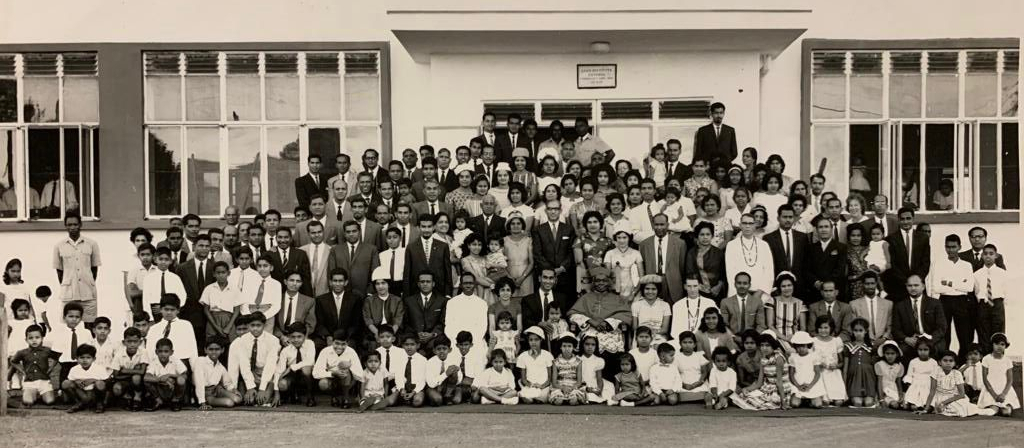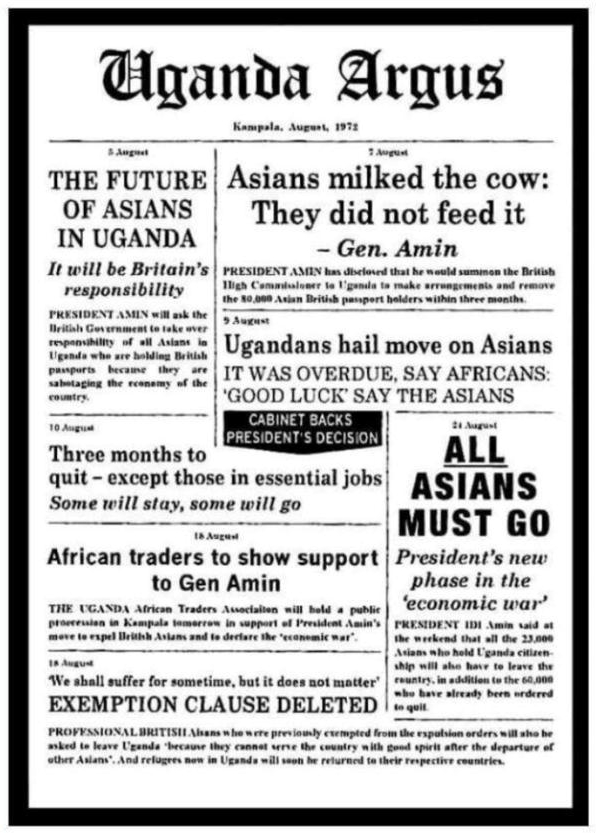Fifty years ago, Uganda’s President Idi Amin expelled almost the entire 60,000 Asian population giving them 90 days to leave the country. In the first of a two-part account, Alvaro Collaço reminisces about events immediately after and how a small group of Goans survived through those traumatic days

The Goan community outside the Entebbe Goan Institute on the Entebbe-Kampala Road.
His Majesty’s Commissioner in Uganda, Col James Hayes Sadler CB approved on September 11, 1905, a 49-year lease of a site in Entebbe for an Institute for the Goan community of Uganda. He could not have foreseen the decimation that was to take place of that same community 67 years later.
That task, enthusiastically carried out by Idi Amin Dada began with the promulgation of his Presidential Decree No 17 of 1972 and the expulsion of almost the entire Asian community in Uganda by November 9, 1972.

The Uganda Argus newspaper of August 1972.
Even those who had acquired Ugandan citizenship since independence in 1962 were to be subjected to scrutiny aimed at cancelling their citizenship and, like the non-citizens, their dispersal to the far corners of the globe.
A few of us, mainly in Entebbe and in key government positions, were to be exempted in the last stages from the expulsion orders and were to witness this aftermath. All were summoned for a final identification check at the Entebbe Sports Club Pavilion. There, an elderly Goan widow was told she had been given her exemption in error. She was ordered to book a flight and leave the country within 24 hours.
Caji D’Souza and Jude Mascarenhas, who had just turned 16, were students in the midst of their Cambridge examinations, were told they no longer qualified to remain in Uganda under their parents’ exemptions and would have to leave within 24 hours.
We made a dash to the Ministry of Internal Affairs in Kampala with an appeal to the Permanent Secretary, Stan Etoori. He was sympathetic and we were able to return to Entebbe with a two-week extension for the two boys with barely five minutes to spare for officially recording this provision. The families had then happily gone on to settle in Goa and Canada.
Dr Rwakihembo, Chief Medical Officer, Ministry of Health, came to the rescue of yet another family who had a one-year-old daughter hospitalised with measles and unable to leave before the deadline. Dr Rwakihembo’s medical certificate provided some form of cover and allowed the family to leave a few weeks later.
Gradually, the fear and the silence that had reached its climax on November 9 began to lift and reminiscent of the tumbrils of the French Revolution, we saw government squads going from street to street, allocating to the indigenous people the shops and businesses abandoned by the Asian owners.
Each squad was normally headed by a Government Minister and comprised one or two policemen, a Ministry for Works ‘fundi’ (technician), a Lands and Surveys Valuer. The Minister superficially perused the credentials of the interested traders and made a decision as to who should be allocated the premises.
The Ministry of Works member of the squad then used an oxyacetylene torch to cut through the locks. The entire squad would then help themselves to prized items on the premises before the valuer carried out a 5-10 minute cursory inventory. This inventory reflected only a fraction of the actual value of the goods in the shop. But then, who was there to question them?
[The writer was Acting Commissioner for the Budget in the Ministry of Finance at the time of leaving Uganda. In 1992, he retired from The British Council in London as Assistant Director, Education Contracts Department.]
NEXT: Final months in Entebbe, life then shifts to UK